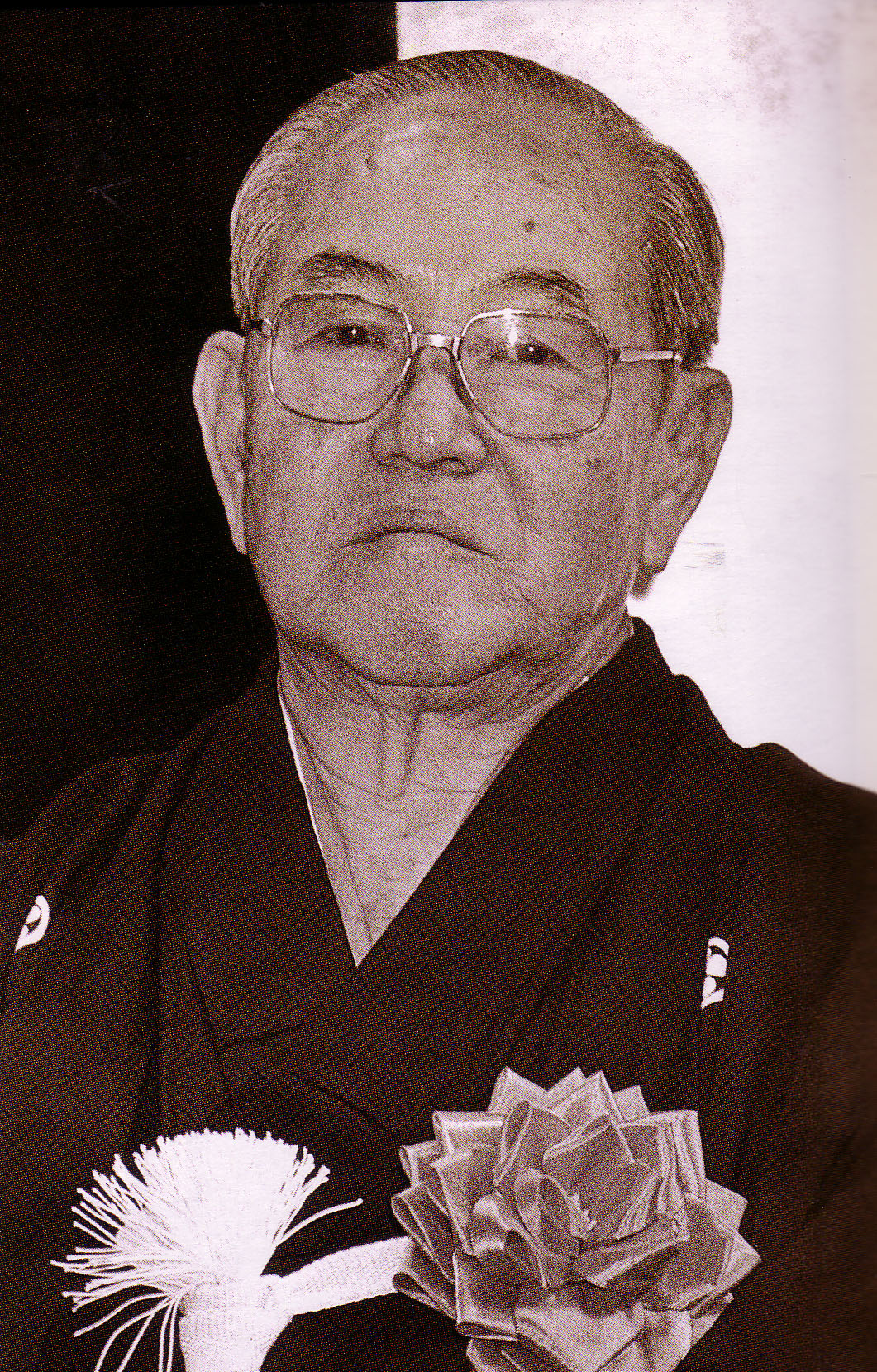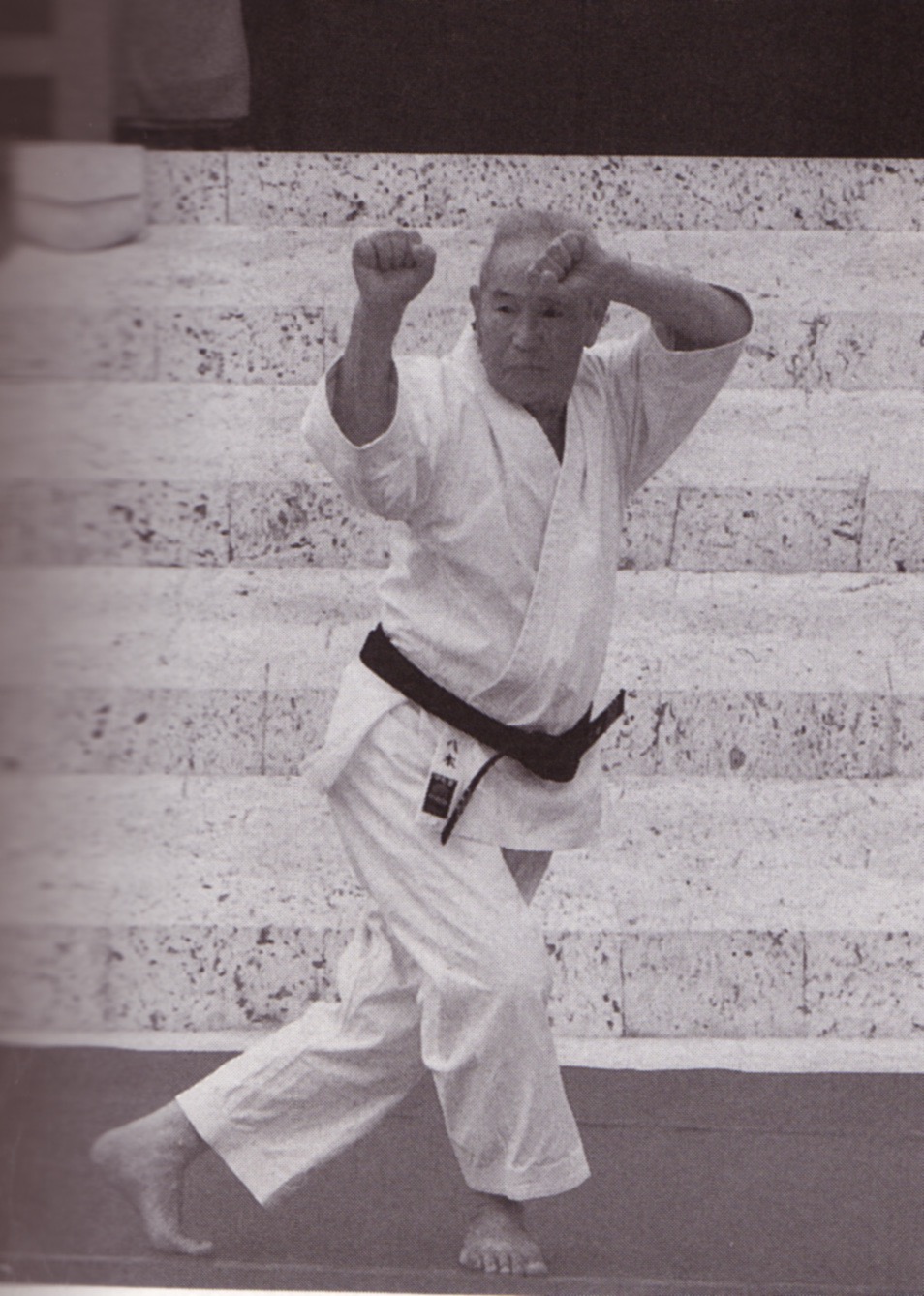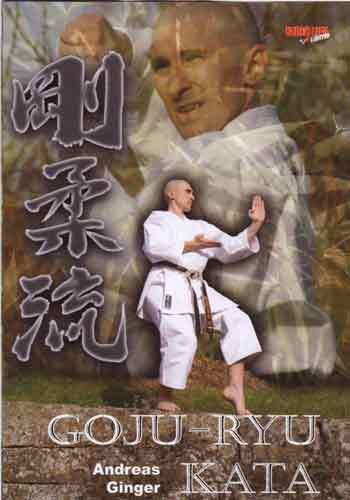Meitoku Yagi 1912- 2003 “His Forefathers Came To Okinawa in 1392 From China”

“His Forefathers Came To Okinawa in 1392 From China”

Yagi Meitoku, was a karate master and teacher. He learned Goju-ryu from legendary founder Chojun Miyagi. On April 29, 1986, Emperor Hirohito named Yagi a Living National Treasure for his contributions to the martial arts. In 1997 he was recognized as Okinawan Prefecture’s Intangible Cultural Asset and Dai Sensei (Top Teacher) 10th Dan.
Yagi's lineage is traced to 36 Chinese immigrant families who came to Okinawa in 1392. Yagi began training under Miyagi at the age of 14. Miyagi was impressed by his dedication and hard work, and eventually taught him all the kata in the Goju-ryu syllabus. Normally, Miyagi would teach Sanchin to his pupils for several years, and then he might teach them Seisan and Seiunchin.
After the death of Miyagi in 1953, Yagi opened a dojo in the Daido district of Naha. He named his school Goju-ryu Meibukan, “the house of the pure minded warrior”. In 1963, the Miyagi family selected Meitoku Yagi to inherit Miyagi’s system, and presented him with the Master’s belt and uniform. Yagi retired from active teaching in the late 1980’s.
 In 1956 Yagi was selected Chair of the newly established Okinawa Karate-do Goju Kai. He was Consultant of All Okinawa Karate-Do Federation from 1975-1979 and Chair of All Okinawa Karate-Do from 1979-1982.
In 1956 Yagi was selected Chair of the newly established Okinawa Karate-do Goju Kai. He was Consultant of All Okinawa Karate-Do Federation from 1975-1979 and Chair of All Okinawa Karate-Do from 1979-1982.
The Meibukan system was brought to North America by Anthony Mirakian Sensei, a student of Master Toguchi in the 1950’s. Accepted as a student by Dai Sensei Yagi, he was awarded San Dan in 1959. He was then asked to oversee the development of Meibukan in North America, and given the certificate of General Manager of Meibukan International. Yagi promoted Mirakian to Kudan (9th degree) Hansei.
The roots of Meibukan Gojyu Karate go back to China, Okinawa and Japan. The fluid White Crane Kenpo, the basics of southern Shaolin (temple), the northern Chinese techniques of Hakke Sho palm, and Tai Chi Chaun contribute to Gojyu-ryu practice and philosophy. Meitoku Yagi developed a kata series in the 1970’s and 1980’s named Meibuken kata based on sacred animals of Taoist cosmology. The first, Tenchi (heaven and earth), was originally two kata, Fukyu kata ichi and kara ni. Meibuken kata differ from goju-ryu, in the vertical closed hand chambers, and a different yoi position, reflecting roots in China. The four Meibuken kata represent four guardians of cardinal directions in Chinese mythology. As with Ten no kata and Chi no kata, the four pair up to show the kata’s bunkai. Seiryu (East, Blue Dragon) and Byakko (West, White Tiger), and Shujakku (South, Red Phoenix) and Genbu (North, Black Tortoise) combine.
Yagi’s goal was for his students to promote peace, to be good people, and to contribute to society.
To learn more about Goju-ryu, please check out Goju-Ryu Kata by clicking the image below.

